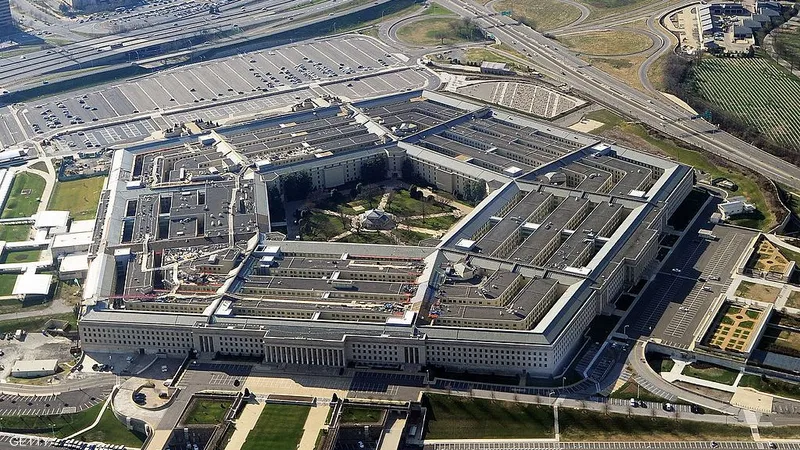Not Russia or China: The U.S. Defense Strategy Shifts Focus to Western Hemisphere

Recent reports indicate that the U.S. Department of Defense (DoD) is considering a major overhaul of its national defense strategy, signaling a dramatic shift from its longstanding focus on global powers such as Russia and China. The emerging approach emphasizes protecting the U.S. homeland and the Western Hemisphere, highlighting a reorientation of priorities in response to evolving security challenges.
Strategic Realignment
According to sources cited by Politico, a draft of the new defense strategy reached the office of Secretary of Defense Pete Heigsith last week. The document reportedly prioritizes local and regional security missions over traditional competition with global adversaries like Beijing and Moscow.
This approach marks a departure from decades of U.S. defense policy, where strategic planning consistently placed China and Russia at the top of the threat list. Previous administrations, including former President Donald Trump’s, had labeled China as the “most dangerous rival” to the United States. The proposed strategy, however, indicates a pivot toward addressing domestic security concerns and regional threats, reflecting a broader trend toward defense isolationism.
Focus on Domestic and Regional Security
Evidence of the shift has already begun to manifest. The Pentagon has deployed thousands of National Guard troops to support law enforcement operations in cities such as Los Angeles and Washington, D.C. These deployments are intended to bolster civil security in the face of domestic challenges.
Additionally, the U.S. military has positioned F-35 fighter jets and naval vessels in the Caribbean to combat drug trafficking and transnational crime. This approach underscores the Department of Defense’s evolving role, extending beyond traditional combat operations against foreign militaries to encompass homeland protection and regional enforcement missions.
Furthermore, the U.S. Army has reportedly established a military border zone along the U.S.-Mexico border, enabling the detention of civilians. Previously, such operations were the exclusive domain of civilian law enforcement. This development has raised debates about the militarization of domestic security and the expansion of federal authority within national borders.
Contradiction with Trump-Era Policies
The proposed strategy contrasts sharply with former President Trump’s confrontational stance toward China. Trump has consistently criticized Beijing, imposed tariffs, and accused Chinese President Xi Jinping of plotting against U.S. interests. Nevertheless, the current strategic planning team, led by Elbridge Colby, who also contributed to the 2018 strategy, is advocating for a more isolationist approach.
Colby’s team emphasizes reducing U.S. global commitments while encouraging allies to assume greater responsibility for their own defense. This approach aligns with perspectives voiced by Vice President J.D. Vance, who has repeatedly called for a recalibration of America’s international obligations.
Reducing Overseas Military Presence
Leaked documents suggest that three key Pentagon reviews—the Defense Strategy Review, Global Force Posture Review, and Air Defense Review—will collectively advocate for a reduced U.S. military footprint abroad. Allies are expected to bear a larger share of the burden for their national security, while the United States seeks to concentrate its resources on protecting domestic interests.
In particular, funding for Baltic security initiatives is slated for reduction, despite prior investments of hundreds of millions of dollars annually to support Latvia, Lithuania, and Estonia. These funds were primarily used to purchase advanced American weapons systems. Officials suggest that future investments will prioritize regional stability and security operations closer to the U.S. homeland.
Implications for National Security
The strategic pivot reflects a growing recognition within the Pentagon that emerging threats may be more immediate within the Western Hemisphere than in remote theaters of global competition. Analysts note that drug trafficking, transnational criminal organizations, and domestic unrest have increasingly demanded rapid and flexible U.S. military responses.
Experts argue that prioritizing local and regional security will allow the United States to better respond to homeland threats, while still maintaining the capability to deter traditional global adversaries if necessary. This approach also signals a potential reduction in the operational strain on U.S. forces, who have historically been stretched across multiple continents and conflict zones.
Political and Diplomatic Reactions
The proposed shift has drawn scrutiny from political observers and European diplomats alike. Critics warn that a retrenchment from global commitments could embolden adversaries like China and Russia, while supporters argue that a more regionally focused defense posture will make the U.S. military more effective and sustainable.
European allies have also expressed concern about reductions in financial and military support. For instance, the diminished funding for Baltic nations could impact regional deterrence capabilities, particularly as these countries have relied on U.S. military aid for their advanced weaponry and strategic defense systems.
Balancing Isolationism with Global Responsibility
The emerging strategy reflects a delicate balancing act between isolationism and international engagement. While the United States appears set to concentrate on regional defense, it will likely maintain selective global commitments, particularly in areas that directly influence American security interests.
This approach could redefine America’s role on the world stage, potentially moving away from proactive global policing toward a more defensive, regionally focused posture. Military planners and policymakers are reportedly considering multiple scenarios to ensure that this recalibration does not leave the U.S. vulnerable to strategic surprises abroad.
Operational Changes
Specific operational changes are expected to include:
-
Expanded National Guard deployments for domestic missions.
-
Increased surveillance and rapid-response capabilities in the Caribbean.
-
Reallocation of resources from overseas bases to U.S. soil and nearby regions.
-
Strategic emphasis on intelligence gathering and homeland threat detection.
These adjustments are seen as essential to achieving the goals of the new strategy: protecting the U.S. population, infrastructure, and economic interests while ensuring that forces are not overextended globally.
The Pentagon’s proposed strategic shift represents a significant reorientation of U.S. defense priorities. By focusing on the Western Hemisphere and domestic security, the Department of Defense seeks to respond to evolving threats while simultaneously reducing the nation’s global military commitments.
If implemented, this strategy could fundamentally reshape America’s defense posture, influence alliances, and alter the balance of security responsibilities with allies around the world. While the strategy is still under review and has not been officially approved, the early signs suggest a decisive shift in how the United States envisions its national security for the 21st century.




